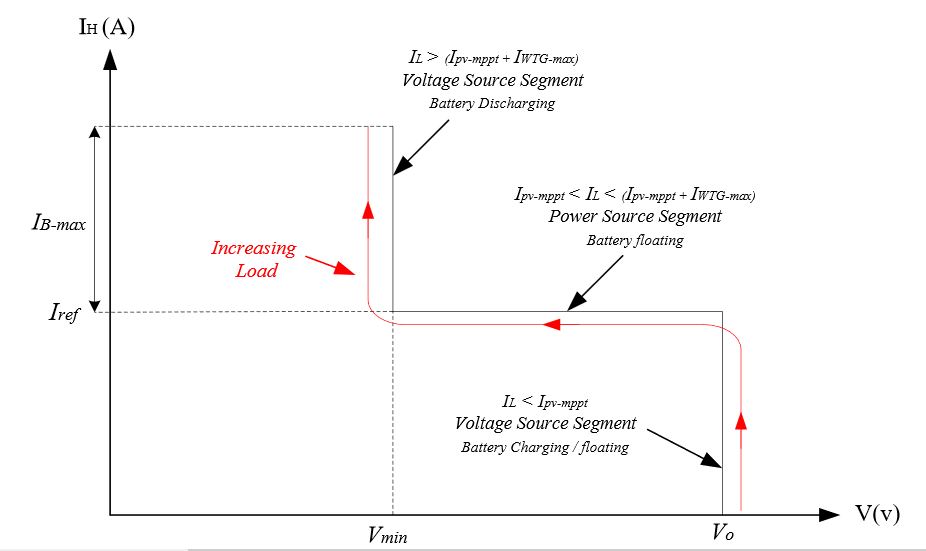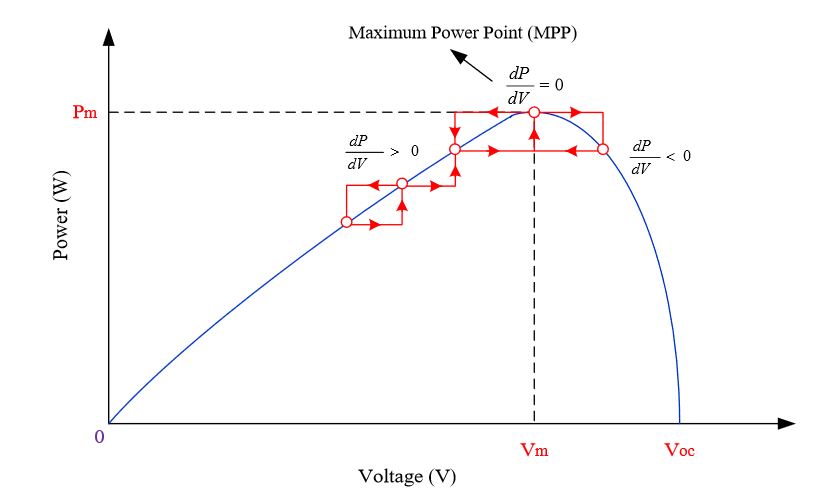ABSTRACT
This paper attempted to control a hybrid DC microgrid in islanded operation mode using decentralized power management strategies. Proposed adaptive I/V characteristic for hybrid photovoltaic (PV) and battery energy storage system (BESS) and wind turbine generator (WTG) adapts the distributed energy resources (DER) behavior independently in accordance with the load demand.
Hence, the PV module can spend its maximum power on load demand and spend the extra power for charging the BESS, which will regulate DC bus voltage and maintain the power balance within the microgrid. When load demand is beyond the maximum generation power of PV unit, WTG will supply the energy shortage.
The proposed control system was applied on the DC microgrid in order to achieve control objectives through a decentralized procedure, without telecommunication links. In order to validate the proposed strategies, the control system was implemented on a DC microgrid within MATLAB/SIMULINK, where the simulation results were analyzed and validated.
HYBRID STRUCTURE OF DC MICROGRID

Figure 1. Block diagram of proposed DC microgrid
The DC microgrid includes a PV module and BESS in hybrid unit form, and a WTG is supposed in an adaptive droop control microgrid, as shown in Figure 1. The control strategy was designed and implemented so as to be generalized to a vast number of hybrid units and droop control units. Notably, microgrid droop control refers to the third layer of hierarchical control within microgrid energy management system.
PROPOSED CONTROL STRATEGY

Figure 4. Equivalent voltage/current characteristics of the hybrid unit
The V/I adaptive characteristic of hybrid unit is shown in Figure 4. As can be seen, IL is load demand and IB-max is maximum current supplied or absorbed by the BESS. According to this figure, if the load demand is less than the MPPT of PV units, the hybrid unit will behave as a voltage source in the microgrid, adapting its output power to the load demand. In this scenario, if the battery SOC is less than SOCmin, then battery will be charged, and if the SOC is within the allowable range, the battery will be in floating status.

Figure 10. I/V characteristic during battery charging scenario
This is equivalent to moving the I/V characteristic to the left according to Figure 10. In this situation, the hybrid unit acts as a load. The WTG will supply the battery charge current and any increase in the load demand up until its nominal current.
COORDINATION OF CONTROL SYSTEM
In the scenario where the PV module power generation is greater than the load demand, the hybrid unit stores the excess power in the battery, which might lead the SOC level to exceed the SOC max limit. This condition occurs when the excess power of PV (Ipv-mppt−IL) is greater than the current IB-max of the battery unit. This can impair the battery voltage and destroy its cells. It is crucial to adopt a suitable controller for monitoring the BESS charge status.
SIMULATION RESULTS

Figure 11. P & O MPPT algorithm mechanism
This study involved the MPPT algorithm based on conventional Perturb and Observe method in order to extract the maximum power of PV array. According to Figure 11, it can be shown that dP/dV becomes zero at the maximum power point, before which the value of power becomes positive and then will be negative. The performance of the proposed decentralized control strategy is simulated and validated through MATLAB/SIMULINK under the nominal scenario with changes in both load and generation, under the charging scenario and the transition between operating scenarios.
CONCLUSIONS
This paper proposed a decentralized control strategy for power management of DC microgrid composed of a hybrid PV/battery unit and WTG in isolated mode. Unlike the conventional methods of PV control as a current source, the hybrid PV/battery was controlled as a voltage source following the adaptive I/V characteristic curve. Based on the system simulation and newly proposed control strategy in MATLAB/SIMULINK, it was found that adaptive I/V characteristic can be applied independently to the microgrid. Hence, the hybrid unit and WTG can inject their maximum powers into the microgrid, supplying the load demand and charging the BESS.
Moreover, it supported the power balance in the DC microgrid, fulfilling the battery’s SOC constraints and regulating the DC bus voltage. In the case that load demand exceeds the maximum generation power of the PV unit, the WTG will supply the power shortage. In addition, in the case that load demand is more than the total power generation of DGs, the BESS will begin to discharge in order to regulate the DC bus voltage and maintain power balance in the microgrid. The proposed strategies were performed without the need for communication links or any centralized energy management system.
Source: Islamic Azad University
Authors: Mehrdad Beykverdi | Abolfazl Jalilvand | Mehdi Ehsan
>> 200+ Matlab Projects based on Control System for Engineering Students
>> More Matlab Projects for Telecommunication for Final Year Students